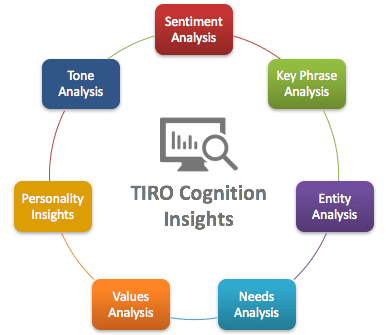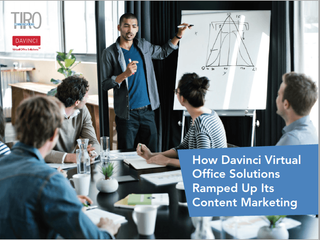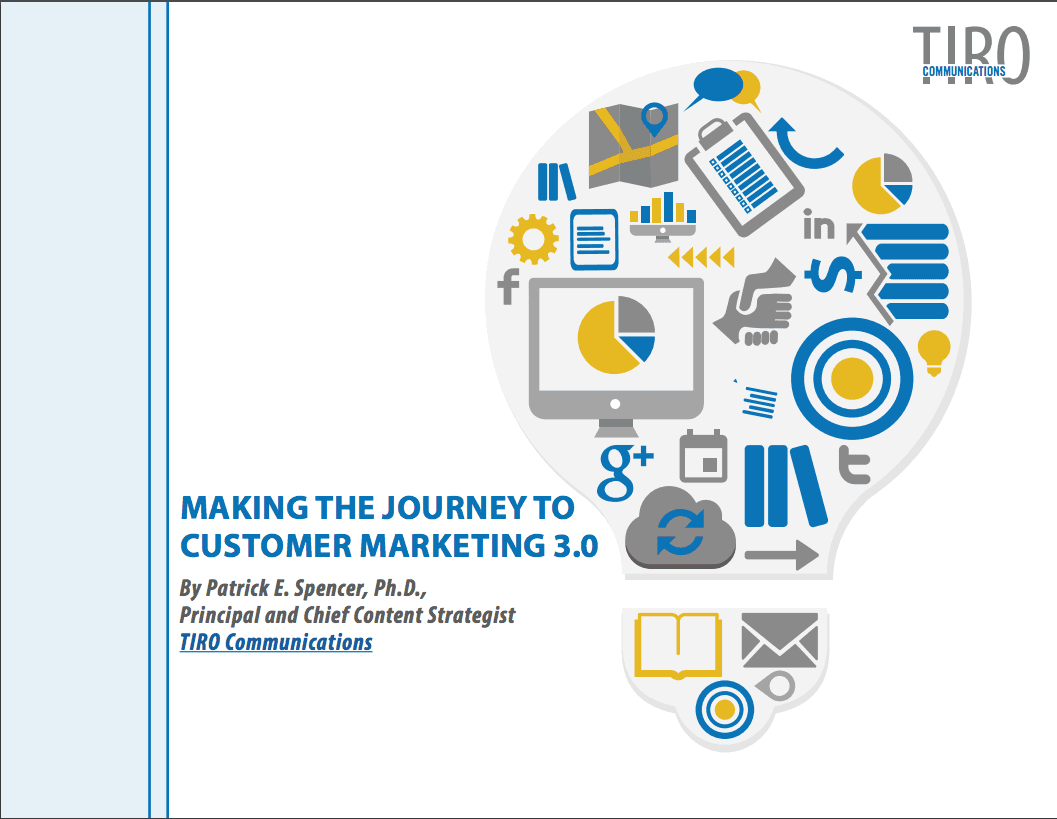Content Libraries and Dynamic Content Recommendations
- By Patrick Spencer
- •
- 07 Mar, 2016
- •
Awash in Content

As organizations rushed to join the content marketing rage over the past few years, many dived headfirst into the deep end of the pool. And while most found they produced more content, they also discovered much of it was underutilized. SiriusDecisions reports that 60 to 70 percent of content produced today goes unused. Gartner concludes this represents nearly $1 billion dollars in wasted marketing spend.
80% of Content Wasted, 17 Hours Per Week of Non-Productivity
There are a number of reasons this is the case. At the top of the list is a disconnect between marketing and sales. IDC reports 80 percent of content that marketing generates is not used by sales. And while admittedly not all content is relevant to sales (and valid), 20 percent utilization is an embarrassing statistic. One might conclude that sales doesn’t need or want content. But that is far from the case. The average sales representative spends 17 hours a week searching for content.
So why the misalignment? A frequent reason is that marketing fails to engage sales in building a content strategy and editorial plan. This creates a disconnect right out of the gate.
Why Content Libraries Are Evasive
But there are other factors as well. Providing sales with a central library that is tagged and fully searchable is something that sounds relatively easy in the Digital Age but surprisingly difficult for many organizations. Smaller companies often take shortcuts and argue the extra time and expense of a content library is unnecessary, dumping content into an intranet site or a shared drive or folder.
Larger companies lack the agility to tackle the problem, and many times there “too many cooks in the kitchen. Each entity producing content typically employs its own publishing and promotional activities. In addition to lost opportunities for cross-content pollination and amplification, the content produced in this scenario rarely gets tagged and stored in a central repository. At the same time, sales enablement and internal communications leaders frequently claim they already have a solution in the form of a sales or company intranet. The the objective of creating a one-size-fits-all storehouse, this often resemble information dumping grounds and are unwieldy to use.
Further, because content marketing is seen as outside of its organizational swim lane when it comes to how sales—and other employees—find and use the content they produce, they encounter significant difficulty when pushing against this barrier (which often is viewed by sales enablement and internal communications as their corporate-executive mandate).
I’ve seen the above scenarios play out repeatedly over the course of my career and am astounded that organizations continue to persist in the Dark Ages when it comes to how their sales teams find and use content. However, the inertia of organizational politics and misaligned skill sets present substantial inertia that isn’t easy to challenge, let alone address.
Building Your Business Case
Organizations obviously need to have a sufficient amount of content before a valid business case for a content library can be established. This threshold will vary from one organization to the next, although it should be safe to say that anything beyond 25 or 30 assets is problematic to manage through standard file systems or intranets.
Beyond lacking the inability to track metrics to the level of each content asset (influence per campaign, persona, qualified lead, opportunity, deals won), which enables content marketers to readjust their strategies to focus on content that is resonating, organizations are faced with content waste and un-productivity on the part of sales, customer success, and marketing looking for content that satisfies their requirements. The business formula focused on employee productivity gains resembles the following:
- Number of Sales and
Customer Success Employees x Number of Hours Spent
on Average Searching for Content x 52 Weeks Per Year x Avg. Salary of
Employee = Total Annual Productivity Gains
Consider the following scenarios that assume each sales and customer success professional spends an average of 17 hours each week searching for content:
TABLE 1: PRODUCTIVITY GAINS FOR SALES AND CUSTOMER SUCCESS STAFF
Staff |
Calculation Details |
Productivity Gains |
10 Employees |
10 x 17 Hours x 52 Weeks x $70/Hour Salary |
$618,000 |
25 Employees |
25 x 17 Hours x 52 Weeks x $70/Hour Salary |
$1.54M |
50 Employees |
50 x 17 Hours x 52 Weeks x $70/Hour Salary |
$3M |
100 Employees |
100 x 17 Hours x 52 Weeks x $70/Hour Salary |
$6M |
Taking the content library to the next level where content is intelligently recommended to the sales or customer success professional within the CRM interface increases content utilization by as much as threefold while concurrently improving the business impact of content (viz., pipeline movement, opportunities created, opportunities won). The business formulas, focused on content utilization and opportunities generated resemble the following:
- Number of Sales and
Customer Success Employees x Average of Leads for
Employee x Average Number of Content
Assets Used Per Lead x Threefold Increase with
Intelligent Content Recommendations = Content Utilization Increase
- Number of Sales and
Customer Success Employees x Average Number of Opportunities
Per Month x Threefold Increase in
Opportunities = Total Increase in Opportunities
Consider the following scenarios that assume 1) an average
content utilization rate of three content assets per qualified lead, 2) 75
active leads per sales or customer success professional, 3) a 25:1 lead-to-opportunity
conversion ratio, 4) a threefold increase in content utilization, and 5) a
twofold increase in opportunities created:
TABLE 2: INCREASED CONTENT SHARES AND OPPORTUNITIES
10 Employees- Content Shares: 10 x 75 Leads x Content Assets x 3x Increase = Increased from 2.25K Content Shares per 75 Leads to 6.75K
- Opportunities: 10 x 3 Opportunities/Month x 2x Increase = Monthly Opportunities to 90 (from 45)
- Content Shares: 25 x 75 Leads x 3 Content Assets x 3x Increase = Increased from 5.625K Shares Per 75 Leads to 16.975K
- Opportunities: 25 x 3 Opportunities/Month x 2x Increase = Doubled Opportunities to 150 (from 75)
- Content Shares: 50 x 75 Leads x
3 Content Assets x 3x Increase = Increased from 11.25K Shares Per 75 Leads to 33.75K
- Opportunities: 50 x 3
Opportunities/Month x 2x Increase = Doubled Opportunities to 300 (from 150)
- Content Shares: 100 x 75 Leads x
3 Content Assets x 3x Increase = Increased from 82.5K Shares Per 75 Leads to 247.K
- Opportunities: 100 x 3 Opportunities/Month x 2x Increase = Doubled Opportunities to 600 (from 300)
7 Evaluation Criteria
With the arrival of Customer-Advocacy Marketing 3.0, the importance of Content Repositories and even Intelligent Content Recommendations is dramatically heightened. Advocacy platforms such as Influitive and CustomerAdvocacy.com rely heavily upon content for many of the challenges and activities extended to advocates.
Without a centralized content library, Customer-Advocacy Marketing practitioners who manage those platforms are at a disadvantage. Only the content they know about can be syndicated out to advocates vis-à-vis challenges and activities. The extrapolation is that not all content gets used and thus amplified when advocates accept those challenges and activities. And as the use cases for those advocacy platforms evolve into engagement platforms, the intertwining of content and advocacy marketing—or more so engagement marketing—becomes even more important.
So what are some of the factors marketing organizations need to consider when evaluating different solutions in this area. The following are a few of the more prominent ones:
- Multi-Dimensional Tagging.
Content needs to be tagged in
multi-relational ways. Rarely do users search for content based on one search
parameter, but rather their searches are multidimensional (e.g., industry,
campaign, and content type). This means dynamic changes in existing tags should
include a universal option (e.g., a change in product name can be applied
across all content assets with the former product nomenclature).
- Tagging Aligned with CRM Nomenclatures.
Marketing organizations
should be able to map content tags to CRM nomenclatures. While these still need
to be checked off each time a new content asset is added to the content
library, this integration will ensure alignment of the content library with the
CRM (and marketing and sales-customer success alignment as well).
- Agile, Flexible Tagging.
Solutions should allow for the
addition of new content tags.
- Content Recommendations.
For more than give years,
customer-advocacy management system providers such as Boulder Logic and RO
Innovation enabled advocate-reference recommendations within the CRM interface.
Here, CRM users receive best-match customer advocate-reference recommendations
based on the nature of the lead or opportunity record (viz., as how the record
is tagged based on CRM nomenclatures). This same capability for all content
(not just Customer Marketing-generated content) is available today in solutions
like KnowledgeTree, SAVO, and Docurated
that use intelligent algorithms
to prescribe content recommendations based on predictive behaviors.
- Multiple Libraries (or Galleries). Content libraries do not
always fit the one-size-fits-all approach. On the contrary, there often are
multiple personas who use them, and their needs and interests differ. For
example, a sales development representative (SDR) team will have different
content needs than account executives who assume ownership of the lead or
opportunity farther downstream. A customer success manager will have even
different needs. There may even be persona content library stakeholders outside
of the company such as partners, which have even more disparate requirements.
One solution that offers multiple library (or gallery) options is Kapost’s Content Gallery.
- Content Marketing Management Integration.
Disaggregating the
sales enablement process from content ideation, workflows, publishing, and
promotion simply doesn’t make sense. Solutions like Seismic
attempt to make these integrations
from the standpoint of sales enablement. Kapost’s Content Suite
approaches it from the position of marketing. Other content marketing
management solutions like Curata’s
Content Marketing Platform
do not offer a content library per se but enable
connections to third-party libraries through an open API.
- Analytics and Reporting.
Organizations must be able to track
business outcomes associated with their content marketing in general (to the
level of assets and campaigns). They also need to measure the results to the
granularity of each syndication or publishing channel—in this case their
content library and recommended content within their CRM systems.
Wasted content equates to wasted opportunities. With unprecedented levels of content being produced, many organizations find themselves awash in content—overwhelmed by the shear volume. As a result, instead of focusing their time and efforts on prospects and customers, sales and customer success professionals spend their time looking for and packaging content. The good news is that there is a solid business case for organizations to build content libraries with dynamic content recommendations, and moreover there are some very robust SaaS-based solution options that can be quickly and easily deployed.













